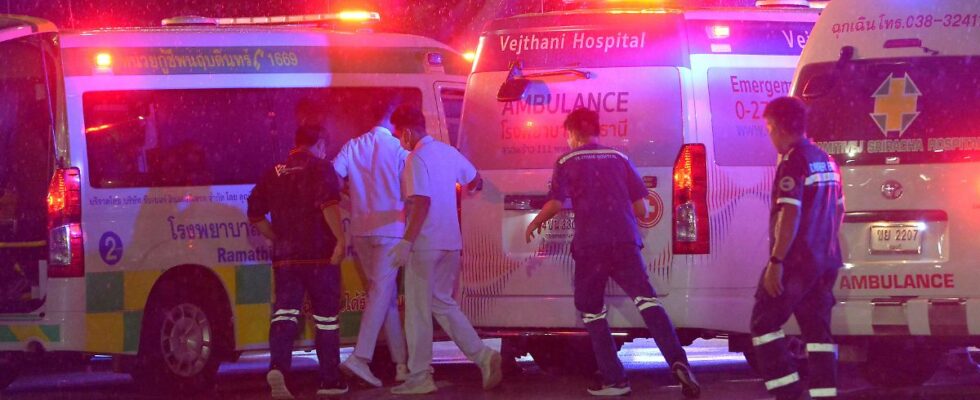Emergency landing in Bangkok
20 passengers in intensive care after turbulence flight
May 22, 2024, 6:20 p.m
Listen to article
This audio version was artificially generated. More info | Send feedback
A long-haul Singapore Airlines flight crashes for several minutes due to an air pocket. A 73-year-old Briton dies. Dozens of passengers are injured, some so seriously that they require intensive treatment after the emergency landing. Experts expect an increase in such incidents.
After a wide-body aircraft that got into severe turbulence made an emergency landing in Bangkok, 20 injured people are still being treated in intensive care units. The Samitivej Hospital in the Thai capital said that nine people had already been operated on and five were still to be operated on. A total of 20 people are being treated in intensive care units at two facilities, 58 people are still receiving inpatient care and 27 have already been discharged.
The day before, a Singapore Airlines Boeing 777-300R with 229 people on board ran into an air hole on the way to Singapore about ten hours after take-off from London while the flight attendants were serving breakfast. The plane is said to have suddenly dropped 6,000 feet (almost 2,000 meters). A 73-year-old British passenger died in the severe turbulence, presumably of a heart attack, authorities and the airline said on Tuesday.
His wife and dozens of other people were injured, some seriously. Most of them were not wearing seatbelts at the time of the sudden turbulence. A passenger reported that the plane suddenly dropped sharply and everyone who was not wearing a seatbelt was thrown to the ceiling. Emotional scenes took place at Changi Airport in Singapore when the special plane landed early on Tuesday morning (local time), the Straits Times newspaper reported.
Turbulence caused by climate change
Last year, scientists at the University of Reading in England demonstrated a connection between the increase in invisible clear air turbulence and climate change. At a typical point over the North Atlantic, they measured an increase in the phenomenon by 55 percent between 1979 and 2020. There is also more turbulence on other flight routes than a few years ago.
Pilots receive rough information and forecasts of possible turbulence areas in their flight plans. However, exact forecasts of clear-air turbulence are not possible, whereas thunderstorms can be identified very easily, reports an experienced pilot from the Cockpit Association. Short-term, precise warnings are only possible if the crews of aircraft flying ahead have informed air traffic control. They naturally pass on the information, said a spokesman for German air traffic control. However, the air masses are constantly changing.
Basically, the aircraft are structurally stable enough to withstand the forces, explained the VC expert. These arise when air masses move in different directions. In the case of a strong downward flow, the aircraft’s altitude can no longer be maintained temporarily. “However, the aircraft does not fall, but moves downwards.”
If there are indications of strong turbulence, the pilots try to fly around the relevant area, but this is not always possible when clouds are typically dense and high in the tropics. “Don’t unfasten your seatbelt under any circumstances,” the VC pilot advises passengers as the most important protective measure in the event of unforeseen turbulence.
“It’s like driving a car through a pothole at 900 km/h.” The flight attendants were instructed to sit down immediately in the event of strong turbulence to avoid being thrown through the aircraft.

